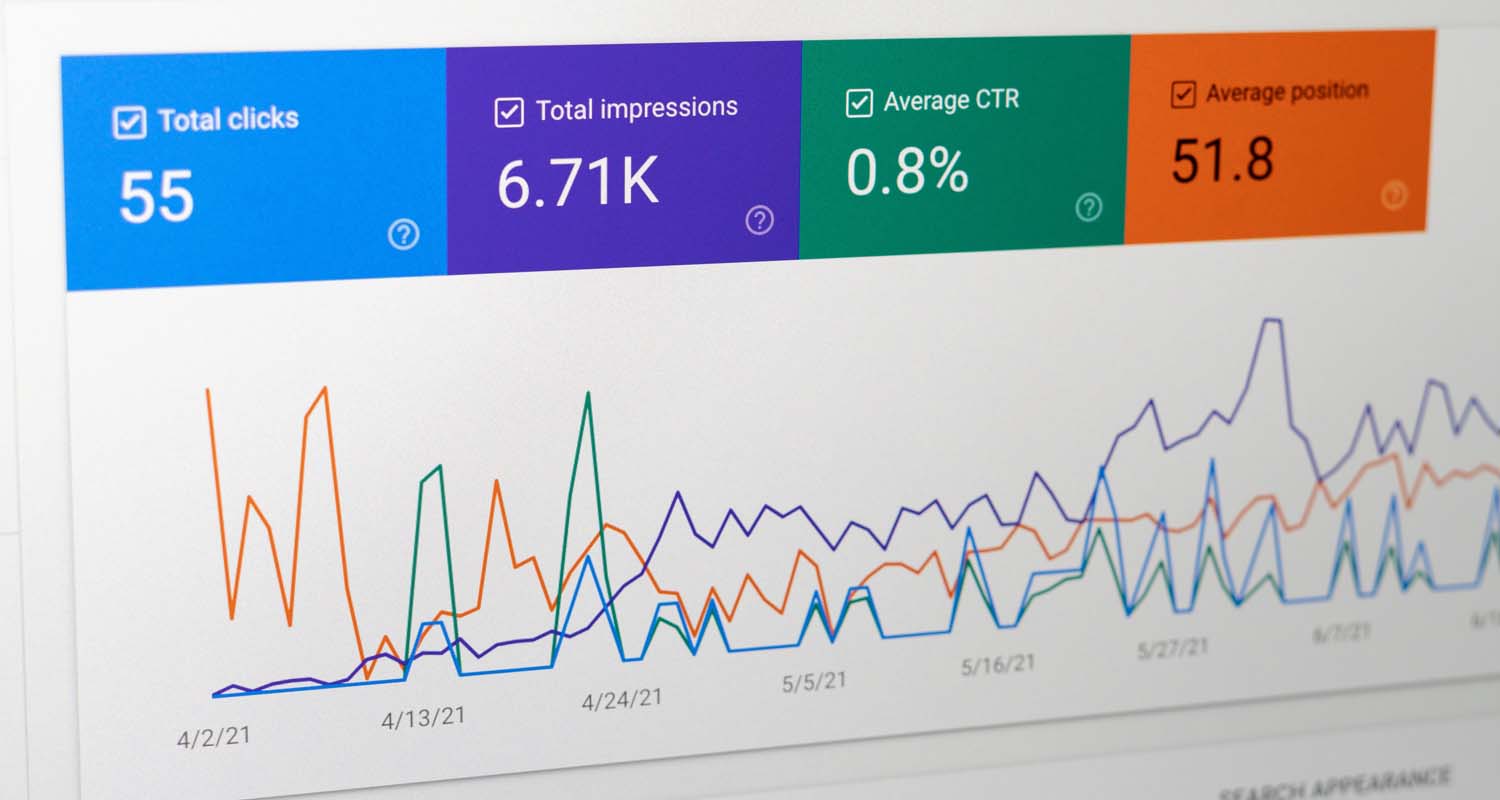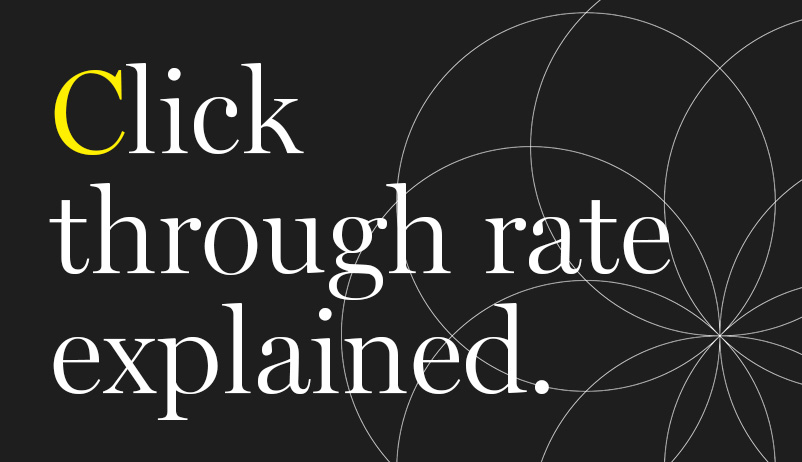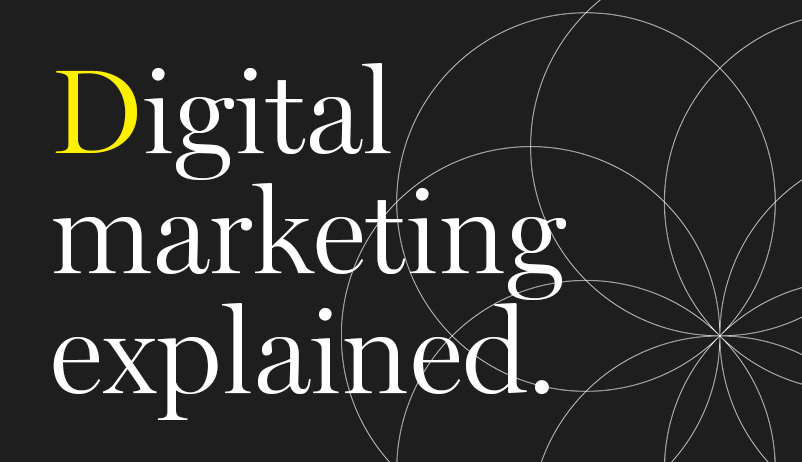

Impressions
Impressions
What is an Impression?
Lorem ipsum dolor sit amet, consectetur adipiscing elit. Suspendisse varius enim in eros elementum tristique. Duis cursus, mi quis viverra ornare, eros dolor interdum nulla, ut commodo diam libero vitae erat. Aenean faucibus nibh et justo cursus id rutrum lorem imperdiet. Nunc ut sem vitae risus tristique posuere.
What Do Impressions Mean in Marketing?
In marketing, an impression refers to the number of times an advertisement or piece of content is displayed or shown to potential viewers or users, typically within a specific context or medium, such as a website, social media platform, search engine results page, or online ad campaign.
Impressions can be an important key performance indicator (KPI) in marketing campaigns, helping marketers assess the visibility and effectiveness of their messaging and creative assets.
How Are Impressions Calculated?
Impressions are typically calculated based on the number of times an advertisement or content is loaded or displayed on a specific platform or medium. The exact method of calculation may vary depending on the platform or medium used, but generally, impressions are counted when an ad or content is successfully rendered or shown to a user's screen.
Calculating Impressions In Online Advertising
In online advertising, impressions are commonly calculated by ad servers or platforms that serve and track ads. Ad impressions are counted each time an ad is served or requested from the ad server and loaded onto a webpage or app. This may be based on the ad being fully loaded or partially loaded, depending on the ad server's criteria.
Calculating Impressions In Social Media
In social media, impressions may be calculated based on the number of times a post or content is displayed in a user's feed, timeline, or search results. Social media platforms typically provide insights or analytics tools that show the number of impressions for each post or content.
It's important to note that impressions do not necessarily indicate that a user has seen or engaged with the ad or content, as they may simply scroll past it without taking any action. However, impressions can be used as a measure of potential reach or exposure, providing insights into the visibility of an ad or content in a specific context or medium.
What Factors Affect Impressions?
There are several factors that can affect the number of impressions generated by a piece of content or advertising campaign. These include:
- Ad or Content Placement: The placement of an ad or content can significantly impact impressions. Ads or content that are placed in prominent positions, such as the top of a webpage, above the fold, or in the first few seconds of a video, are more likely to receive higher impressions as they are more visible to users.
- Audience Size: The size of the target audience or reach can also affect impressions. A larger audience or reach can potentially result in higher impressions, as the ad or content has the opportunity to be displayed to more users.
- Ad or Content Format: The format of the ad or content can also impact impressions. Different ad formats, such as display ads, video ads, or social media posts, may have different impressions due to their unique characteristics and how they are displayed or delivered to users.
- Ad or Content Frequency: The frequency at which an ad or content is shown to users can affect impressions. Higher frequency, or the number of times an ad or content is shown to the same user, can result in higher impressions, as the ad or content is repeatedly displayed to the same user.
- Targeting and Segmentation: The effectiveness of targeting and segmentation can also impact impressions. Ads or content that are highly targeted to a specific audience or segment are more likely to result in higher impressions, as they are more relevant and appealing to the intended audience.
- Ad or Content Quality: The quality of the ad or content, including its relevance, creativity, and engagement, can also affect impressions. High-quality ads or content that resonate with users are more likely to receive higher impressions, as they are more likely to be noticed and engaged with by users.
- Platform or Medium: The platform or medium used for marketing, such as websites, social media, search engines, or email, can also impact impressions. Each platform or medium has its own unique features, audience behaviours, and advertising policies that can influence impressions.
- Seasonality and Timing: Seasonality and timing can also affect impressions. Factors such as holidays, events, or time of day can impact user behaviour and engagement, which can in turn influence impressions.
It's important to consider these factors when planning and evaluating marketing campaigns, as they can impact the effectiveness and efficiency of impressions in reaching and engaging with the target audience.

"Impressions are the foundation of marketing visibility, reflecting the number of times content or ads are shown. While limited in context, they offer insights into reach and campaign evaluation, complemented by other engagement metrics for a comprehensive understanding. But they are also regarded as a vanity metric, so marketers should be cautious when presenting them to boardroom executives. A high impression score may not correlate to sales performance."
Paul Mills
Founder, VCMO
How To Improve Number Of Impressions In Marketing.
Marketers can employ several strategies to improve the number of impressions in their marketing campaigns, including:
- Optimising Ad Placement: Ensuring that ads or content are placed in prominent positions where they are more visible to users can increase impressions. This may include above-the-fold placements on web pages, early placements in videos, or prime positions in social media feeds.
- Expanding Audience Reach: Expanding the target audience or reach through effective targeting and segmentation can help increase impressions. This may involve identifying new audience segments, exploring different channels or platforms, or leveraging data-driven insights to optimise targeting strategies.
- Enhancing Ad or Content Formats: Experimenting with different ad or content formats through A/B testing can impact impressions. Marketers can try different formats, such as display ads, video ads, native ads, or interactive content, to determine which formats resonate best with their target audience and yield higher impressions.
- Optimising Ad or Content Frequency: Adjusting the frequency at which ads or content are shown to users can impact impressions. Marketers can experiment with different frequency levels to find the optimal balance that maximises impressions without overwhelming or annoying users.
- Improving Ad or Content Quality: Ensuring that ads or content are of high quality, engaging, and relevant to the target audience can increase impressions. High-quality ads or content are more likely to be noticed, clicked on, and shared, resulting in higher impressions.
- Diversifying Platforms or Mediums: Expanding marketing efforts across different platforms or mediums can help increase impressions. Marketers can explore new platforms, channels, or mediums to reach a wider audience and increase impressions, depending on the preferences and behaviours of their target audience.
- Optimising Seasonality and Timing: Leveraging seasonality and timing to align marketing efforts with user behaviour and engagement can impact impressions. Marketers can adjust their campaigns to align with holidays, events, or time of day that are relevant to their target audience.
- Monitoring and Adjusting: Regularly monitoring and analysing campaign performance can help identify areas for improvement and optimisation. Marketers can track impressions, analyse data, and make data-driven adjustments to their campaigns to continuously optimise for higher impressions.
By implementing these strategies and continuously evaluating and optimising marketing campaigns, marketers can aim to improve the number of impressions and increase their overall reach and visibility to their target audience.
What Other Metrics Can Be Used To Measure Engagement?
In addition to impressions, there are several other metrics that can be used to measure engagement in marketing campaigns. Some of the commonly used engagement metrics include:
- Click-through Rate (CTR): This measures the percentage of users who clicked on a link or call-to-action (CTA) after seeing an ad or content. A higher CTR typically indicates a higher level of engagement, as it reflects users actively clicking on the ad or content to learn more or take further action.
- Conversion Rate: This measures the percentage of users who completed a desired action, such as making a purchase, filling out a form, or subscribing to a newsletter, after clicking on an ad or content. Conversion rate is a key metric for measuring the effectiveness of a marketing campaign in driving user actions and achieving campaign goals.
- Time on Site or Page: This measures the amount of time users spend on a website or webpage after clicking on an ad or content. Longer time on site or page generally indicates higher engagement, as it reflects users spending more time interacting with the content and exploring the website.
- Bounce Rate: This measures the percentage of users who leave a website or webpage without taking any further action after clicking on an ad or content. A lower bounce rate typically indicates higher engagement, as it reflects users staying on the website and exploring other pages or taking further actions.
- Social Media Engagement: This includes metrics such as likes, comments, shares, retweets, and mentions on social media platforms. Social media engagement measures the level of interaction and involvement of users with social media content, indicating their level of interest and engagement with the brand or campaign.
- Video Engagement: This includes metrics such as views, view duration, likes, comments, and shares on video platforms. Video engagement measures the level of interaction and interest of users with video content, reflecting their engagement and involvement with the video message.
- Scroll Depth: This measures how far users scroll down a webpage or email after clicking on an ad or content. Deeper scroll depth typically indicates higher engagement, as it reflects users spending more time exploring the content and scrolling down to view more information.
- Return Visits: This measures the number of times users return to a website or webpage after clicking on an ad or content. Higher return visit rates typically indicate higher engagement, as it reflects users coming back to the website for further interactions and actions.
- Email Open Rate and Click Rate: These metrics measure the percentage of users who open an email and click on links within the email, respectively. Email open rate and click rate reflect the engagement and interest of users with email marketing campaigns, indicating the effectiveness of email content and messaging.
- Surveys or Feedback: These measures involve collecting feedback from users through surveys, polls, or feedback forms to understand their opinions, preferences, and behaviours. Survey or feedback data can provide valuable insights into user engagement, satisfaction, and preferences.
These are just some examples of the many metrics that can be used to measure engagement in marketing campaigns. The choice of metrics depends on the specific campaign goals, objectives, and channels used, and it's important to select the most relevant and meaningful metrics to gain insights into user engagement and optimise marketing strategies accordingly.
Advantages of Measuring Impressions.
Measuring impressions in marketing campaigns can offer several advantages, including:
- Reach and Visibility: Impressions provide insights into the number of times an ad, content, or campaign was displayed or viewed by users. Measuring impressions helps marketers understand the reach and visibility of their marketing efforts, providing an indication of how many people potentially saw their content.
- Campaign Evaluation: Impressions serve as a key performance indicator (KPI) for evaluating the success of a marketing campaign. By measuring impressions, marketers can assess the effectiveness of their campaigns in terms of generating exposure and visibility, which can help inform decision-making and optimise future campaigns.
- Budget Allocation: Impressions data can inform budget allocation decisions. Marketers can use impressions data to determine which campaigns or channels are generating the most impressions and allocate budget accordingly to optimise their marketing spend and achieve maximum exposure.
- Audience Insights: Impressions data can provide insights into the audience reached by a marketing campaign. By analysing impressions data, marketers can understand the demographics, geography, and behaviour of the users who were exposed to their content, helping to refine targeting and segmentation strategies.
- Performance Benchmarking: Impressions can serve as a benchmark for comparing the performance of different marketing campaigns or channels. Marketers can use impressions data to compare the effectiveness of different campaigns or channels in terms of generating exposure and visibility, and make data-driven decisions on resource allocation and optimisation.
- Campaign Optimisation: Impressions data can help identify opportunities for campaign optimisation. By analysing impressions data, marketers can identify patterns, trends, or gaps in their campaign performance, and make adjustments to optimise their campaigns for better reach and visibility.
- Competitive Analysis: Impressions data can be used for competitive analysis, allowing marketers to compare their campaign performance with that of their competitors. By analysing impressions data, marketers can gain insights into how their campaigns are performing in relation to their competitors, and make strategic adjustments to improve their market position.
- Reporting and Accountability: Impressions data can be used for reporting and accountability purposes, providing measurable results to stakeholders. Marketers can use impressions data to report on the performance of their campaigns, demonstrate the value of their marketing efforts, and be accountable for their marketing investments.
In summary, measuring impressions in marketing campaigns offers several advantages, including insights into reach, visibility, campaign evaluation, budget allocation, audience insights, performance benchmarking, campaign optimisation, competitive analysis, and reporting and accountability.
Disadvantages of Measuring Impressions.
While measuring impressions in marketing campaigns can provide valuable insights, there are also some potential disadvantages to consider, including:
- Limited Context: Impressions alone do not provide a complete picture of campaign performance. They only represent the number of times an ad or content was displayed or viewed, without taking into account other important metrics such as engagement, conversions, or revenue. Relying solely on impressions may result in an incomplete understanding of the effectiveness of a marketing campaign.
- Ad Blocking and Fraud: Impressions can be affected by ad blocking, where users use software or settings to block ads from being displayed, or ad fraud, where fraudulent activities result in inflated impressions. This can distort impression data and impact the accuracy and reliability of impressions as a performance metric.
- Viewability Challenges: Impressions are typically measured based on ad placements, but not all impressions may be viewable by users. Factors such as ad placement, ad size, page layout, and user behaviour can impact the viewability of impressions. Inaccurate viewability measurement can affect the validity of impressions as a metric for evaluating campaign performance.
- Lack of Actionable Insights: Impressions alone may not provide actionable insights for campaign optimization. Marketers need to analyse other metrics such as engagement, conversions, or revenue to gain a comprehensive understanding of campaign performance and make informed decisions for optimization. Relying solely on impressions may not provide sufficient insights for effective campaign optimisation.
- Variability and Inconsistency: Impressions can vary depending on the tracking and measurement methods used, resulting in inconsistencies in reporting and analysis. Different platforms, tools, and vendors may have different methodologies for measuring impressions, which can lead to variability and inconsistency in impression data.
- Focus on Quantity Over Quality: Impressions focus on the quantity of exposures or views, but do not necessarily reflect the quality of those exposures or views. Impressions may not differentiate between accidental views, partial views, or engaged views, and may not capture the actual impact or effectiveness of the marketing content.
- Limited Insights into User Behaviour: Impressions do not provide insights into user behaviour beyond exposure or viewing. They do not capture user actions, preferences, or behaviours beyond the impression event, which may limit the ability to understand the full customer journey and optimise campaigns accordingly.
- Privacy Concerns: Collecting and analysing impression data may raise privacy concerns, especially with the increasing focus on data protection and privacy regulations such as GDPR. Marketers need to ensure compliance with applicable regulations and take appropriate measures to protect user privacy when collecting and using impression data.
In summary, while impressions can provide valuable insights into campaign performance, there are also potential disadvantages to consider, including limited context, ad blocking and fraud, viewability challenges, lack of actionable insights, variability and inconsistency, focus on quantity over quality, limited insights into user behaviour, and privacy concerns. Marketers need to consider these factors when using impressions as a performance metric and complement them with other relevant metrics for a comprehensive understanding of campaign effectiveness.
Recap On Impressions.
In summary, impressions are a key metric in marketing that reflect the potential reach of an ad or content to a target audience. While impressions alone do not indicate active engagement or actions, they provide valuable insights into the visibility and exposure of marketing efforts. Impressions can be used to evaluate brand awareness, ad reach, and campaign performance.
However, it's important to consider other engagement metrics alongside impressions to assess the effectiveness of marketing efforts in driving user actions and achieving campaign goals. By analysing impressions in conjunction with other relevant metrics, marketers can gain a holistic view of their marketing performance and make data-driven decisions to optimise their strategies for better results.
About VCMO
VCMO is a UK-based provider of fractional marketing services, supporting B2B SMEs—ranging from funded scale-ups to mid-tier and private equity-backed businesses—through key moments of growth and transformation. Its Chartered Fractional CMOs and SOSTAC® certified planners embed strategic marketing leadership into organisations navigating product launches, new market entry, acquisitions, and leadership gaps.
Ready to take your marketing to the next level? Let us help you get there.
Subscribe to Our Newsletter
Fractional Edge is our montly newsletter sharing expert opinion on the latest trends in fractional leadership, curated marketing content from leading sources, VCMO events, and much more. Subscribing is quick — just add your name and email.












